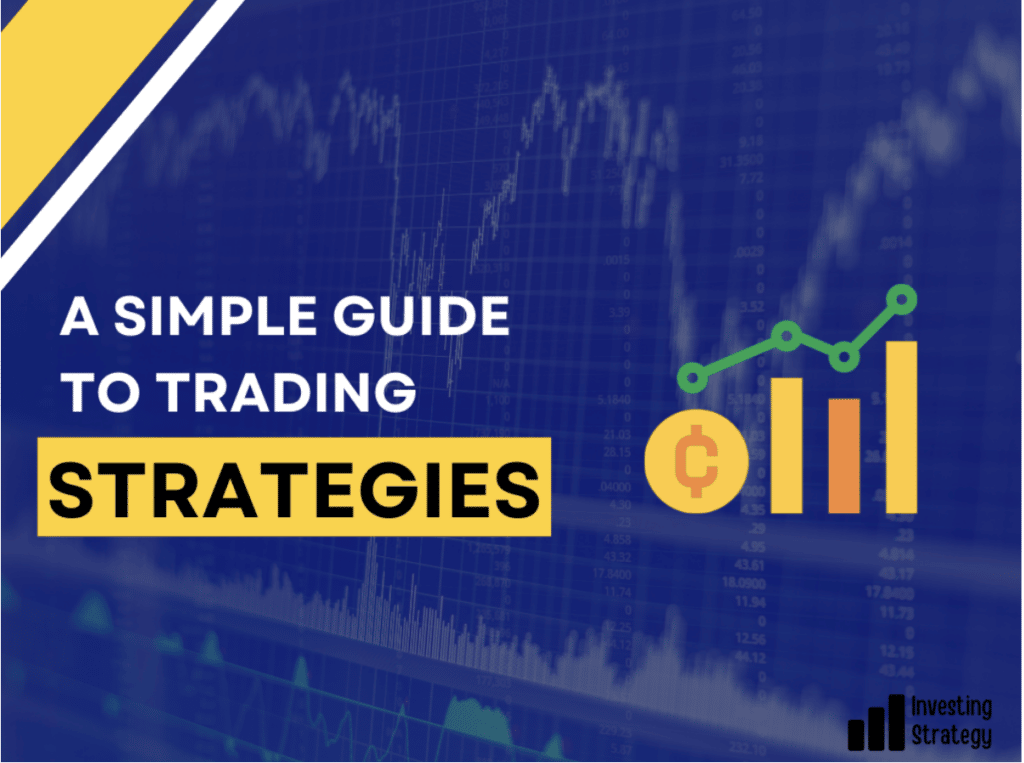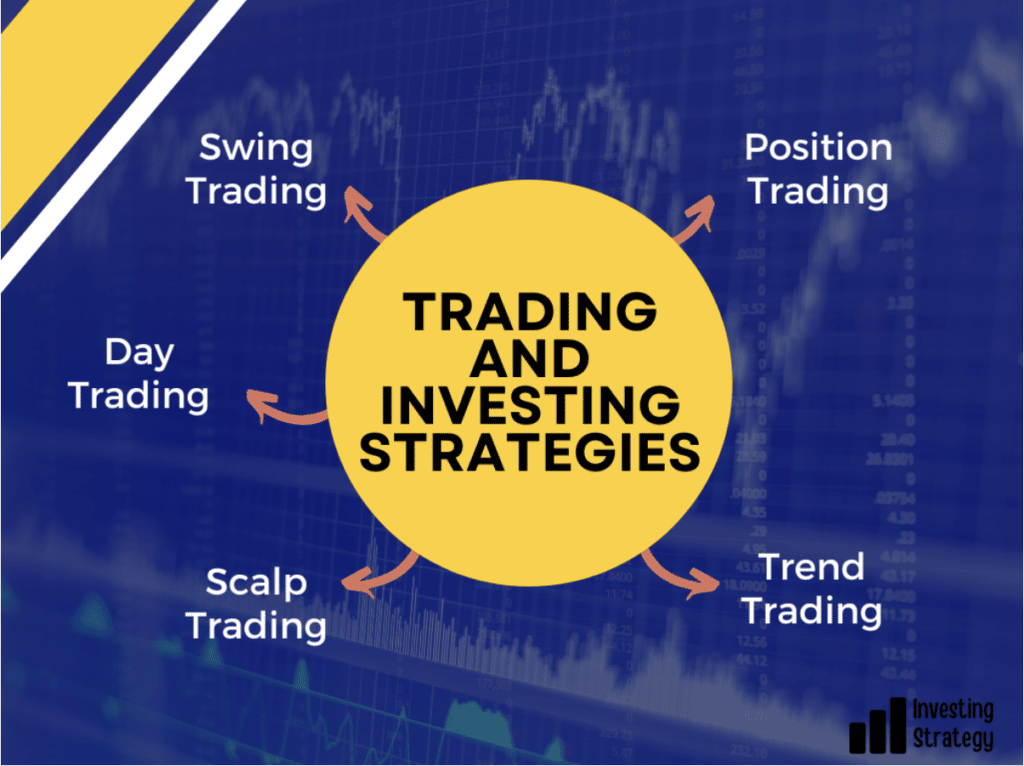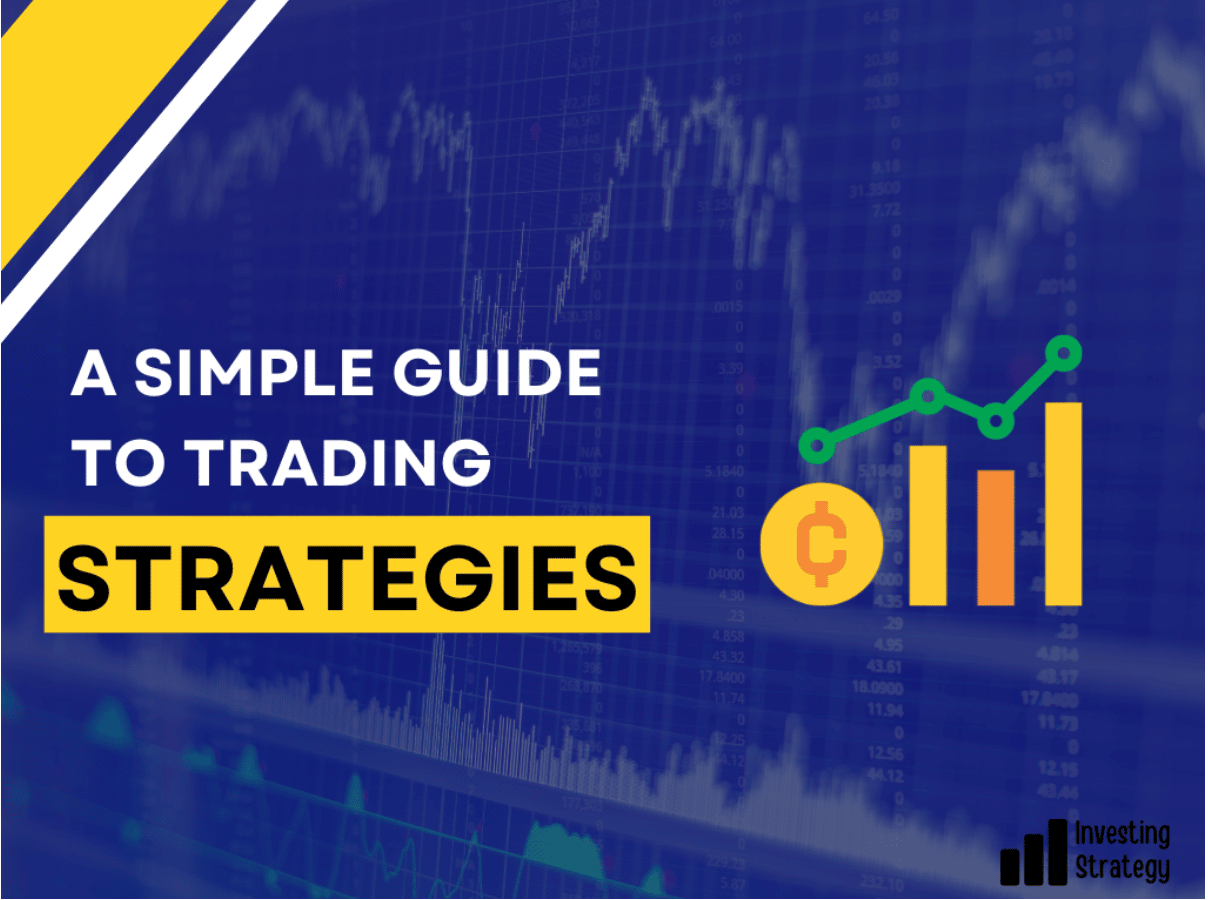If you are having trouble trading or want to improve your trading, this guide should be a good start. It has some of the most popular techniques used by traders for their success.
Concise Overview
- Trading and investing are financial decisions with many similarities and differences
- Proper understanding of trading and investing models, theories, and analysis help you learn how to trade
- Knowing how and when to trade is not enough; you must follow specific strategies to succeed

Trading is like a boxing fight. Two people enter a ring to challenge each other and battle it out till one person earn’s victory. However, somewhere outside the ring, people heavily gamble on the fighter they expect to win. But no one can correctly predict the outcome of a boxing fight.
No one likes losing money — not gamblers, not traders. However, while gamblers take risks and hope to chance that they will win, traders analyse and use specific strategies to predict the market’s direction.
Mastering a few trading strategies helps traders gain clarity, analyse the market faster, make better decisions, and increase their chances of success. Trading models and strategies are numerous, but we have taken the time to create a comprehensive list for you to choose from and improve your skills as a trader.
Trading Vs. Investing: What’s the Difference?
Trading and investing are similar lucrative undertakings where participants utilise specific strategies to seek profit, and market factors drive outcomes. Although they follow the same structure, a thin line separates traders from investors. See the table below for the differences between trading and investing.
| Differences | Trading | Investing |
|---|---|---|
| Consideration | Traders consider the current market conditions and how it affects a company’s stocks. | Investors are focused on a company over a long period. |
| Prediction | As a trader, you can bet for or against a company’s stock. | Being an investor means that you expect a company’s stock to rise. |
| Time | Traders are in the game for a short term (minutes, hours, days, weeks, or months.) | Investors buy and hold shares for many years. |
| Profit Margin | Profitable trading can bring in 10% (or more) of your capital daily, weekly, or monthly. | Investors are comfortable settling down for a 10% annual profit on their investments. |
| Transaction Frequency | Traders can take trades daily, weekly, or monthly depending on when the opportunity appears. | Investors must study a company’s performance for a long time before making investment decisions. |
| Risk | Trading involves high risk because of market volatility. | The risks are lesser with investments. |
| Asset Ownership | Traders can only bet on the direction of a company’s stock within a given time; they have no ownership over the stocks. | When you invest in a company’s shares, you have ownership over your investment. |
| Diversification | Trading requires keen attention, reducing the number of stocks traders can engage in. | Investors can diversify their investments, which helps to increase their chances of success. |
| Approach | Most traders use technical analysis to make decisions. | Investors are more inclined to use fundamental analysis to decide. |
| Leverage | Traders only need a percentage deposit to open a trade. | Investors need full payment to take any position. |
Models, Theories, and Analyses in Trading and Investing
Think of the trading industry as a football field. The goal is to make profits, the ball is your money, and you are the player. It doesn’t matter where or how you take your shots; if your target is directed at the post, you can become a successful trader.
On the one hand, a football team can use a direct attack, a counterattack, set pieces, and other means to score a goal. Traders, on the other hand, rely on models, theories, and analyses to achieve their individual goals.
Trading Models
Models focus on a class of specific assets that generates profit for traders. Investment models help traders to select the best investments that will provide the highest returns. However, investments also play a role in the development of a country because they provide capital for growth. There are three well-known types of investment models;
Public Investment Model
In the public investment model, the government of a country uses revenue from the public sector or state government to invest in specific products and services.
Private Investment Model
To increase the earnings from public investment models, the government sometimes allow private entities to invest in public ventures. The investment – domestic or international – can help to increase employment, develop infrastructure, and grow profit for investors.
Public Private Partnership Model
The public-private partnership model is an agreement between at least one public and one private party to invest in goods, services, and infrastructure. These partnerships are usually best because while private entities have access to state-of-the-art technology and innovation, the government can hasten the time and reduce the cost of executing this model.
Trading Theories
There are just as many theories on Wall Street as there are traders. People devise these theories based on their opinion on how you can beat the market. Still, they are only theories, and none of them gives you a 100% guarantee of success. Below are some of the most popular theories in the trading industry:
Greater Fool Theory
This theory suggests that no matter the current market value of your stock, there will always be someone in the market willing to buy it from you at a higher price. This theory works for many people, but there will always come a time when the last person to buy cannot sell, and that person becomes a “greatest fool” and a bagholder.
Efficient Market Hypothesis
The Efficient Market Hypothesis (EMH) suggests that since all information about a stock is made public and it already trades at a fair price, no one can buy that stock below its fair price. This theory is arguably one of the most controversial topics in the trading industry.
Odd Lot Theory
This theory is based on a technical analysis strategy called Measuring the Odd Lot. In this theory, investors assume that when there is an increase in small-lot selling, it’s time to buy, and vice versa. The theory holds that when investors are making an action en-masse, they are wrong.
Rational Expectations Theory
This theory claims that investors make decisions based on their prediction of the future, and by doing so, they can bring out this future. That is, when investors expect a stock to rise, they go for it. And the more people buy the stock, the more it rises. However, the downside is that for investors that buy, other investors are selling, and the market will favour the side with higher trading volume.
Short Interest Theory
The Short Interest Theory states that when investors are heavily short-selling a stock, it is a good time to buy. Based on market behaviour, after a massive move in one direction, the price will try to correct itself, and investors can use this correction period to make profits. However, this does not work in all situations, and investors must be strategic about how they enter the market.
Trading and Investing Strategies
Everyone is trading, yet everyone is playing a different game, and you should never compare yourself to another trader or investor or use their success as a yardstick. Find your strengths and harness them. Let’s look at the different strategies traders and investors use to profit off the market.

Swing Trading
In swing trading, traders use market oscillations to buy or sell. Like an actual swing in motion, swing traders act like a pendulum moving quickly from the buy region to the sell region when they expect the market to move in that direction. Trading the swing requires proper technical analysis as traders must study recent price action, supply, demand, momentum, etc., and rely less on the overall market trend. Fundamental analysis will also be needed to know an asset’s micro and macroeconomic value.
Swing traders can hold their trade for more than one day or a few weeks. Studying and analysing price charts can take a long time before swing traders enter a trade; however, they won’t need to monitor the trade once they take a position. This trading strategy is excellent if you have other engagements that will not permit you to sit in front of your screen all day.
Day Trading
Day trading is a common practice among full-time traders. They look for opportunities between the opening and closing hours of the day, enter the market when they find such opportunities, and make as much profit as possible. Day traders avoid the risk of overnight trading by closing their positions at the end of the day, whether or not they are in profit. Speaking of profit, day traders do not gain huge sums from their traders, so they have to accumulate profit to become successful constantly.
Day traders depend on fundamental analysis and constantly follow up with economic events that can affect the price of an asset. They also use technical analysis to study the price movement in the previous days. Day trading helps traders avoid many risks; however, a high level of discipline, experience, and risk management skills is required from day traders. Besides, there are days when the market is uneventful, and there’ll be no market confirmation to take a trade.
Scalp Trading
Scalp trading (or Scalping) is a trading strategy that targets small price movements and scraping small profits off the market in a few minutes. Scalp traders or scalpers spend the least time in the market among all kinds of trailers. These traders are like snipers or archers; they find a perfect time to enter and exit the market to maximise profit at any given time. Common advice that traders give each other is to “let your profits run.” But scalp traders are different; they run with their profit.
Scalpers are most active when there is high liquidity and high trading volume. Since they have to enter and exit the market multiple times a day, scalpers always look for tight spreads that won’t reduce their potential profits on each trade. Being a scalp trader requires monitoring the market every minute, looking for a sniper entry and exit.
Position Trading
Position traders are like investors; they hold a trade for a long time — usually several months or years. They are not bothered by short-term price fluctuations as they expect the price to correct itself and eventually move in the direction of their trade.
Position traders do not need to check daily or hourly timeframes to make trading decisions — the weekly and monthly price movements are enough to help them perform a comprehensive technical analysis of the market. These traders also use fundamental analysis to study the micro and macroeconomics of the market and find good entries and exits.
Before delving into position trading, you must have a broad understanding of the market and learn to lock in your profit periodically. The potential profits in potential trading are high. However, traders must also consider smaller events that build up and develop market trends to avoid serious losses.
Trend Trading
Looking at trends is the easiest way to know the direction of any market. There is no doubt that the trend is your friend and successful trend traders know how to make money from this friend. Trend trading is one of the effortless trading strategies, and it can be used by swing or position traders since they are more inclined to move in the market direction.
Trend traders use indicators and other technical analysis tools to find retracements and pointers that the market will continue in a specific direction. Once they confirm that the retracement is not a reversal, they go into the market and take sweep profits.
These five trading strategies are the most common types, and together, they constitute a significant percentage of the total number of traders worldwide. But other trading strategies have repeatedly proven to secure profits for traders. Some of them include:
News Trading
This short-term strategy involves placing trades based on how you expect the market to react to significant news releases.
End-of-day Trading
As the name implies, end-of-day trading involves placing trades toward the market closing. End-of-day traders take advantage of the fact that they can decide how the market will close to sweep profits.
Range Trading
Range trading is a strategy that applies when the market consolidates between a support and resistance zone. Scalpers use range trading to take profits as the market moves upward and downward.
Arbitrage Trading
Arbitrage trading reduces risk to the barest minimum. Traders find two equal assets with different prices and buy lower-priced assets because they know the price will increase soon.
Paper Trading
This strategy helps traders learn and master their craft rather than helping them make profits. It involves writing your expectation from the market and waiting till the market proves you wrong or otherwise.
Essential Trading Tips for Beginners Trading
If you are just starting in the trading industry, you must understand that you’re swimming in shallow waters and can be bitten by sharks, crocodiles, and other dangerous aquatic organisms. You must also stay in control to avoid drowning. If you are going to navigate this water properly, you will need the following tips;
- Understand the market.
- Pick a trading strategy and stick to it.
- Learn and practice consistently.
- Know when to take risks, know when to stop.
- Avoid trading with emotions.
- Make mistakes and learn from your mistakes.
- Prioritise risk management.
- Success will come; be patient.
- Be open-minded
- Document your trades
The Bottom Line
Trading is arguably one of the most lucrative businesses you can try. However, you must be ready to lose money to gain more. Business Insider reported that all forex traders in the U.S. lose part of their trading money within 12 months. While losing is normal in trading, you must ensure that your profits outweigh your losses in the long run — that’s what makes you a successful trader.
This article has been prepared for information purposes only. It does not constitute advice, and no party accepts any liability for either accuracy or for investing decisions made using the information provided.

